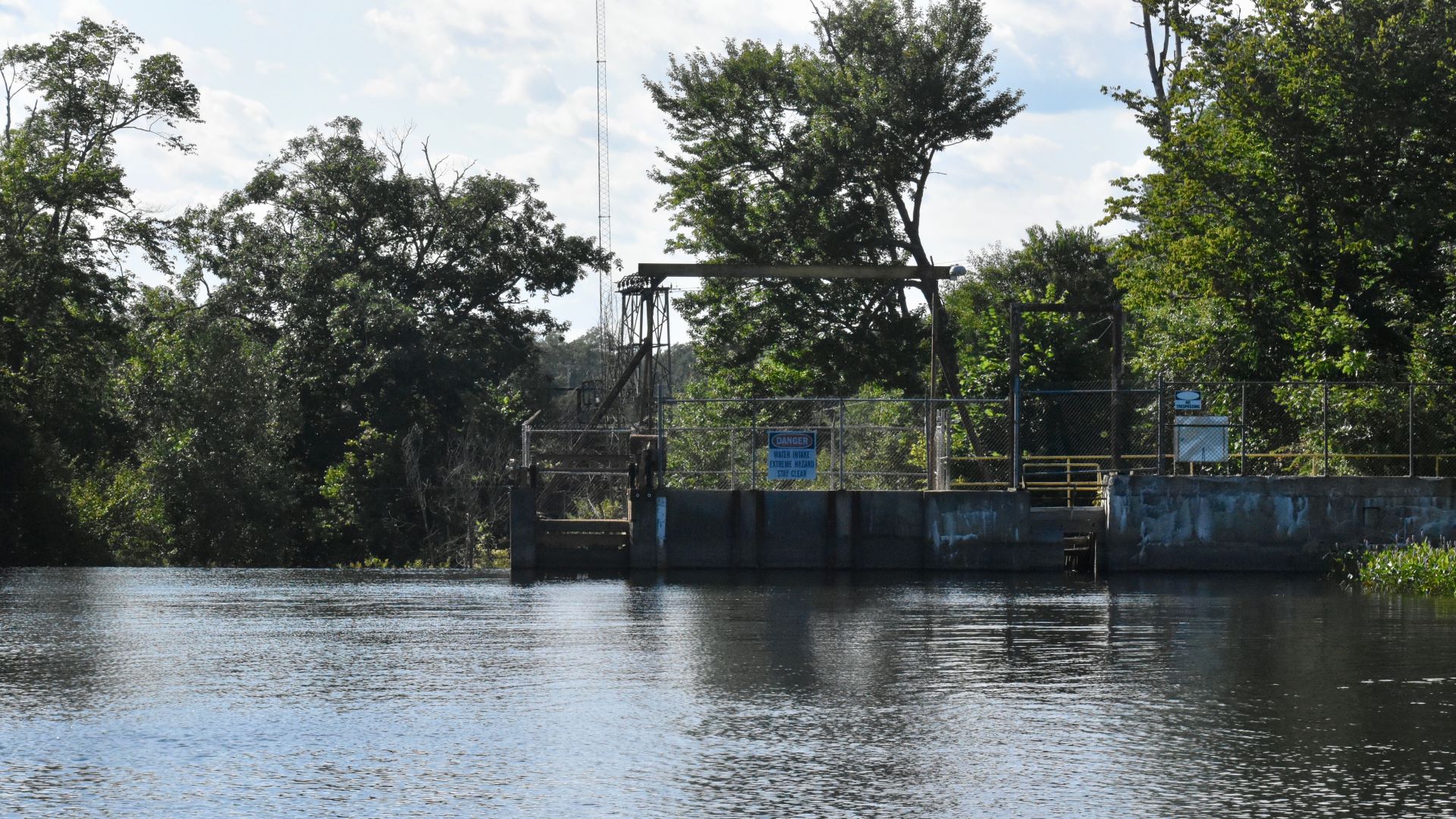Nearly a decade after a company abandoned the paper mill that once shaped Bucksport’s economy, its successor is in the process of abandoning three dams that shape the surrounding watershed.
On Thursday night, scores of people who rely on the dam’s reservoirs for drinking water and waterfront property value packed into the former mill’s campus, seizing their only opportunity to confront representatives of the dams’ owner, AIM Development USA.
One by one, attendees peppered company officials with questions about what would happen to the homes huddled around the dams’ reservoirs and those located downstream, what structural condition the dams are in and what risks will remain when they’re abandoned.
“If the worst-case scenario… is that you release the water because we have no other option, do we have a (projection) of what will happen?” asked a resident on Toddy Pond whose family has lived there since the 1930s. “Should I get scuba gear for my house, or should I get sun-tanning lotion, because it will be a desert?”
For officials from Bucksport, Orland, Surry and the local water utility, Thursday marked the first time meeting with AIM in-person since the company announced its intention to abandon the dams this summer. They demanded clarity on how AIM would honor its obligation, as stated in property deeds, to maintain a reservoir that serves as Bucksport’s drinking water supply and cools a gas-fired power plant. If no entity or state agency claims the dams, state law allows AIM to open their flood gates and release water from the reservoirs in a minimally impactful way, leaving mudflats and the structures behind.
“Our town has sought information from the petitioners,” said Bucksport town manager Susan Lessard, yet “rather than receive information, we have experienced a process characterized by chaos and confusion.”
Representatives from AIM met them with silence, promising to answer the questions online in the next few weeks.
As Maine’s dams age and maintenance costs mount, the outcome of the debate could provide a playbook for others to follow.
Significant challenges
Thirteen years after a Monitor investigation revealed that Maine was behind on inspecting the state’s most hazardous dams, Maine’s dam safety program, like dozens of others across the country, remains understaffed and underfunded, even in the face of a changing climate and more intense storms.
Although the state agency tasked with ensuring the safety of more than 500 dams is now up-to-date with inspections, the program has yet to institute modern protocols.
The office lacks digitized records of emergency procedures that residents should follow if a local dam fails, as well as digital inundation maps outlining flooding threats.
Last year the program had to bring an engineer out of retirement to inspect the hundreds of dams under the state’s jurisdiction because applications for the permanent lead engineer were scant, despite reclassifying the position numerous times to higher pay scales. The office only recently hired an assistant engineer to assist with inspections.
“Maine’s dam infrastructure is aging, and the Dam Safety Program is currently understaffed, facing significant challenges with implementing dam risk reduction,” wrote the authors of Maine’s 2023 State Hazard Mitigation Plan.
Several of the dams overseen by the program are both “high” risk — meaning people could die if they fail – and in “unsatisfactory” condition — the worst possible grade. The dam safety program rarely follows up on its repair recommendations, according to a 2023 report, and does not take enforcement actions when dam owners disobey, meaning the program does not compel private dam owners to maintain even the most dilapidated, dangerous dams.
As Maine dams reach the end of their useful lives and maintenance bills mount, some dam owners are abdicating upkeep responsibilities or forfeiting ownership of their dams altogether — leaving communities like Bucksport and Orland at risk of inheriting these costly burdens.
What’s at risk
At an average age of more than 100, the 672 regulated dams on Maine rivers, streams, lakes and ponds are far from paragons of modern infrastructure.
Of the 590 Maine dams tracked in a federal dam database, 62 are considered to be in poor condition and have some sort of safety deficiency, while 15 are deemed unsatisfactory and require more immediate maintenance.
Ten of the fifteen unsatisfactory dams are also labeled high hazard, meaning that dams from Boothbay Harbor to Fort Fairfield with immediate safety defects could put the lives of downstream residents at risk if they fail.
Nine poor condition dams, meanwhile, have the same high hazard rating but are on average more than two decades older than the unsatisfactory dams.
It’s up to the state dam safety program to guide owners’ dams into compliance, but regulators say that can be difficult because they lack capacity for enforcement.
Maine’s agency has two engineers to oversee the state-regulated dams, which include 15 of the 39 high hazard dams. The federal agency tasked with overseeing large hydropower dams, meanwhile, has five engineers to inspect the 34 high hazard dams under its purview.
The behemoth frozen potato purveyor McCain Foods owns a high hazard, poor condition dam that forms Christina Reservoir near Fort Fairfield and another high hazard, unsatisfactory condition dam at Lake Josephine just a mile away.
The town of Fort Fairfield owns a pair of high hazard, unsatisfactory condition dams at Bryant Pond and upstream on Libby Brook that are intended to reduce flood risk, but are developing risks of their own. (The town disputed the dam safety program’s assessment, saying their risks are lower and the dams are regularly maintained).
Outside of this cluster in Fort Fairfield, Maine’s 75 high hazard dams and 85 significant hazard dams (which may not harm human life if they fail, but will cause economic and environmental damage) are scattered across the state.

It’s up to the Maine dam safety program’s lead inspector and assistant to assess 160 high and significant hazard dams once every six years and the remaining 363 dams under state jurisdiction once every 12 years, all while maintaining emergency plans.
The program has been able to do just that, according to a 2023 assessment conducted by the Association of State Dam Safety Officials. All Maine dams have been inspected within their deadlines and have corresponding emergency plans; this means Maine has one of the highest compliance rates in the country.
The authors of the assessment commended Maine dam safety employees for their hard work to “keep the program’s head above water” but painted a grim picture of the program’s ability to enforce safety standards.
“Identifying deficiencies through periodic inspection is crucial, but ultimately does nothing for public safety if dams are not repaired and completed in an acceptable manner,” the authors wrote.
Low funding and chronic understaffing have long plagued Maine’s dam safety program, symptoms of its sole reliance on federal grants for the program’s operating costs.
The program does not receive any direct appropriations from the state legislature and does not collect any fees. In 2021, it received a meager $67,241 through its primary federal grant — at least $200,000 less than it needed, according to an internal report, and the program had to borrow from funds elsewhere.
Though the dam safety program has the authority under state law to enforce compliance, none of that funding has gone to enforcement or compliance measures. The program lacks written policies describing what enforcement would even look like.
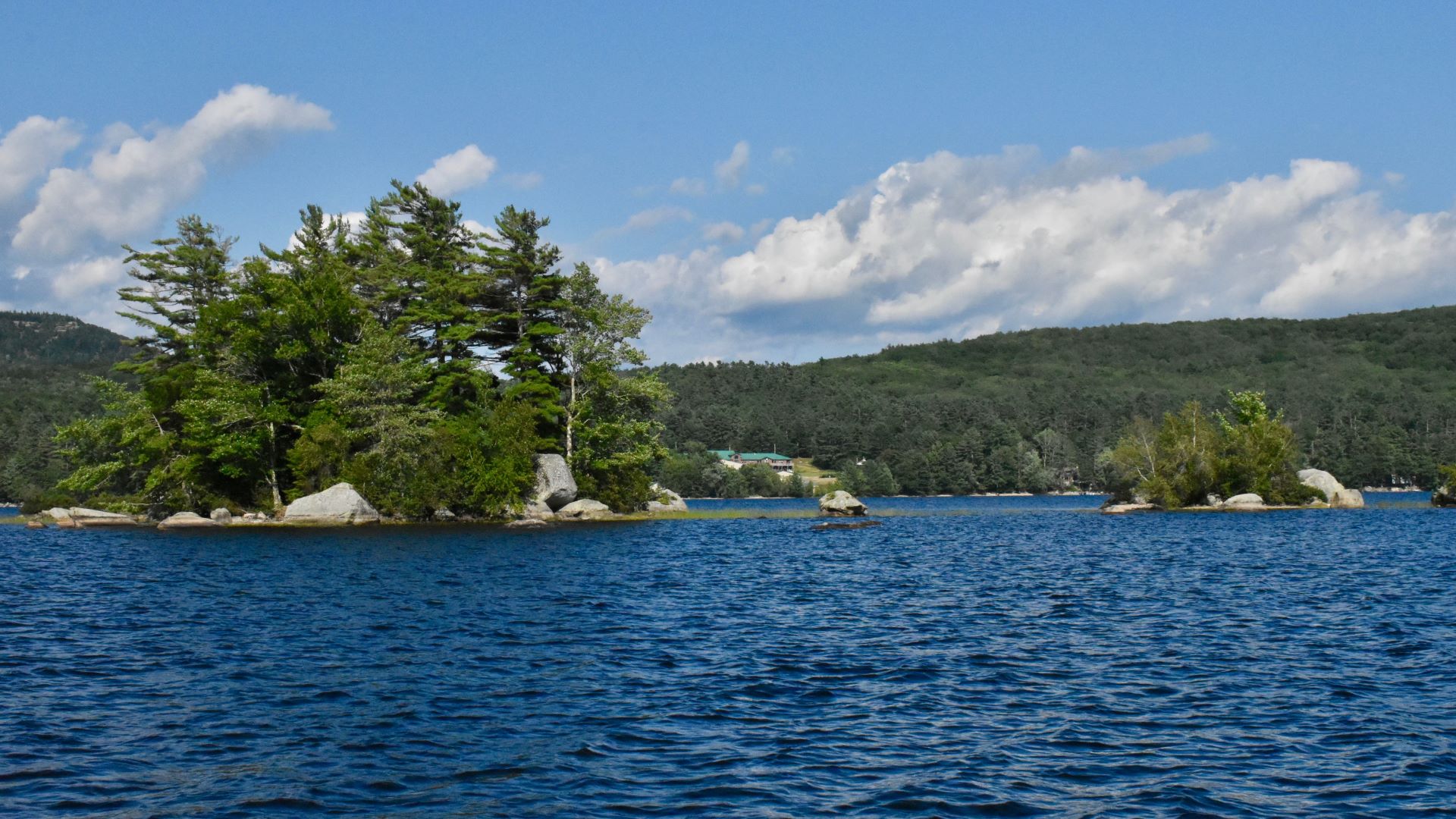
Its scant budget has also made it nearly impossible to hire a permanent lead dam inspector, according to Steven Mallory, the head of the dam safety program and the director of operations and response for the Maine Emergency Management Agency.
One year ago, Mallory, who is not an engineer, was facing a perilous situation after the lead dam inspector left for another job and no viable candidates applied to replace him. The program was narrowly rescued when retired inspector Tony Fletcher agreed to return on an interim basis.
Mallory has increased the pay scale of the job several times since then but has had only two candidates apply over the three years, likely because engineers can find far more lucrative positions elsewhere.
With these constraints, the dam safety program is constantly playing catch-up, failing to take more proactive steps to enforce safety standards, guide dam owners through necessary upkeep or removal and modernize risk mapping and dam databases, according to the assessment.
Recent flooding and near misses with dam failure elsewhere in the United States have shown how costly such shortfalls can be.
Emergency officials sounded this alarm to a state commission on infrastructure and climate change resilience last week.
“We’ve seen in other states this year issues where dams have failed and flooded communities,” said Darren Woods, director of Aroostook County’s Emergency Management Agency. “We certainly don’t want to see that happen here in Maine.”
Awaiting disaster
Hazard classifications and condition assessments don’t necessarily paint the full picture of a dam’s corresponding risk, according to Mallory.
The structures may be designed to withstand a 500-year flood and perform well when one hits, but the floodwaters still have to go somewhere.
In the case of the town-owned dam in the heart of Dover-Foxcroft, that somewhere is into a crucial state thruway and the basement of a nearby apartment complex. Last December, when the Piscataquis River swelled behind the dam’s wall, it caused water damage and complicated access to the southern part of the state.
“Most of our dams are in really good shape where they can handle excess water. However, with all the flooding and the rain, it just exasperates that problem,” Mallory told The Maine Monitor. “It’s just too much water and it’s gotta go somewhere.”
Human-caused climate change has increased both the frequency and severity of floods in Maine, spurred by intense downpours concentrated in shorter and shorter periods.
A study published last month in the scientific journal Nature found that it’s these rapid downpours — like the one that ripped through central and western Maine in December 2023 — preceded by multiple days of precipitation that caused most dam failures between 2000 and 2021.
Its authors concluded that current engineering standards for dam flood resilience assume conservative climate conditions, and they called for officials to revisit these standards and consider more severe weather patterns.
Like most other state dam agencies, Maine’s program follows model state dam regulations distributed by the ASDSO and federal government. Those standards have not yet incorporated climate change’s effects into their guidance, according to Mallory, though an ASDSO official said the organization has been advocating that state dam programs adopt updated models for extreme precipitation.
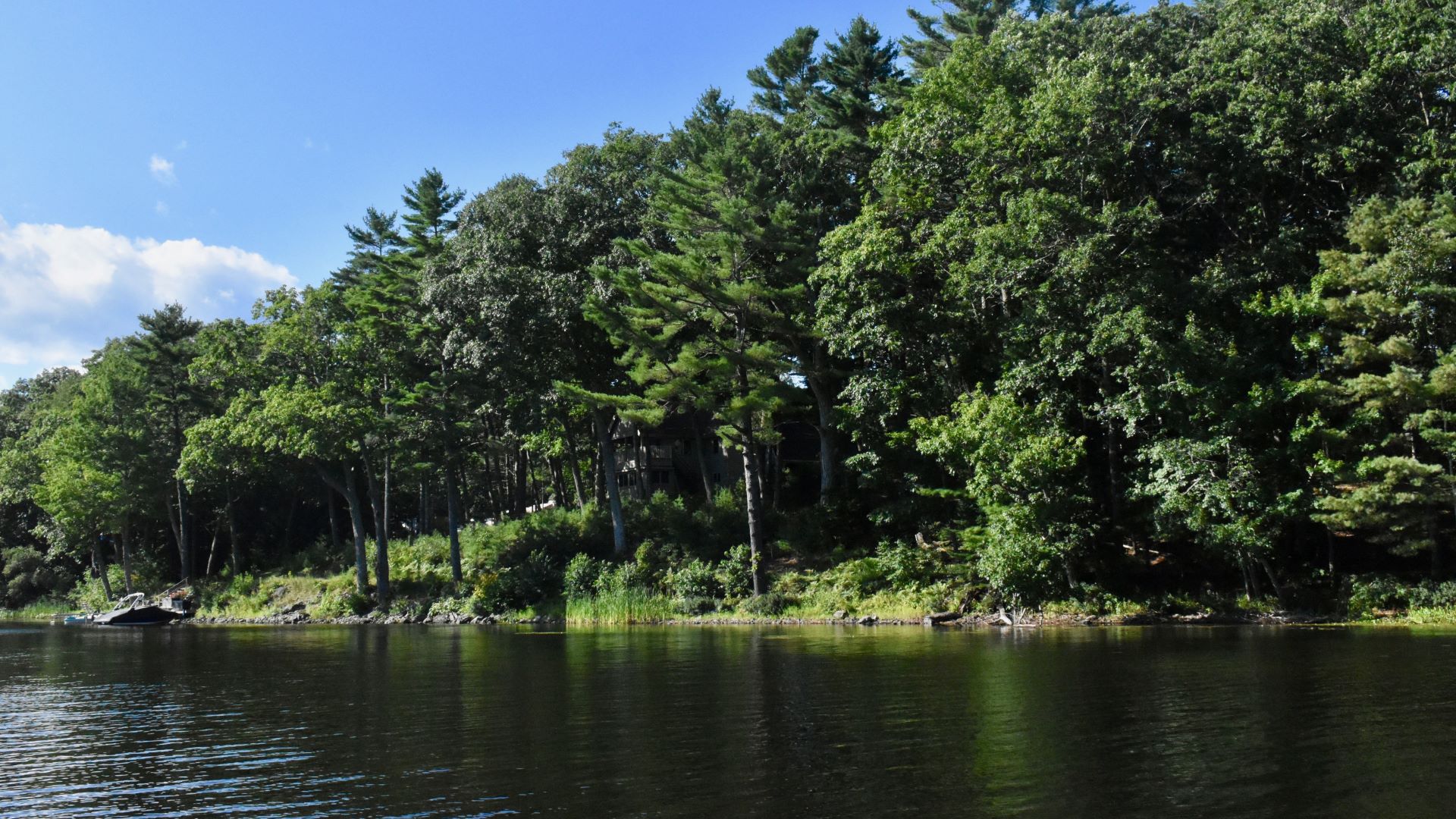
Back in Maine, meanwhile, regulations already consider worst-case flooding scenarios for state-regulated dams.
Mallory got a taste of what could be in store for Maine dams in the early morning hours of December 19, 2023, when a catastrophic combination of rain and snowmelt engorged the Kennebec River.
Mallory’s fears lay downstream, where a pair of high hazard dams are nestled on the Cobbosseecontee Stream right before it meets the Kennebec River in the heart of downtown Gardiner.
Both dams are in adequate condition, but Mallory was concerned nonetheless. He rushed to visit the dams, and was relieved to find them effectively passing the torrent of floodwater.
Despite the fears that nagged him that day, Mallory said he is confident in Maine’s dams. Yet he can’t discount the increasing impact climate change will have on their infrastructure.
While climate change may not be incorporated into the way Maine inspects dams and helps draft emergency plans, the state is preparing Maine dams for climate change in other ways.
Maine’s 2023 State Hazard Mitigation Plan, for example, calls for tapping into a federal grant program for rehabilitating and removing high hazard dams. The mitigation plan’s local risk reduction recommendations show a variety of maintenance needs for municipally-owned, high hazard dams that have been deferred due to a lack of funds, like a $200,000 project to fortify a dam in Durham that has been patched but “needs to be strengthened and repaired to prevent failure.”
In July 2023, nearby Vermont experienced firsthand the disastrous outcomes that deferred dam maintenance can lead to. After record downpours flooded valleys up the state’s mountainous spine, five dams failed and more than 50 were damaged or overtopped by floodwater, according to Ben Green, head of the Vermont dam safety program.
The dams that failed were all in poor condition and municipally or privately owned, but luckily, Green said, were fairly small, earthen embankments and didn’t result in any downstream damage. That was due in part to the intense flooding that had already wrecked the dams’ watersheds, meaning even the two significant hazard dams that failed did not cause any separate, discernible damage.
“So that was fortunate, I guess,” Green said.
There were close calls elsewhere. On July 11, 2023, murky brown floodwater in the Wrightsville Reservoir scaled the side of a state-owned dam right outside of Montpelier, coming within one foot of overtopping its spillway and bursting down into the already flood-ravaged state capital.
Green said his office stationed personnel at the state-owned dams all night for the first few days after the flood, closely monitoring the dams for any signs of impending failure.
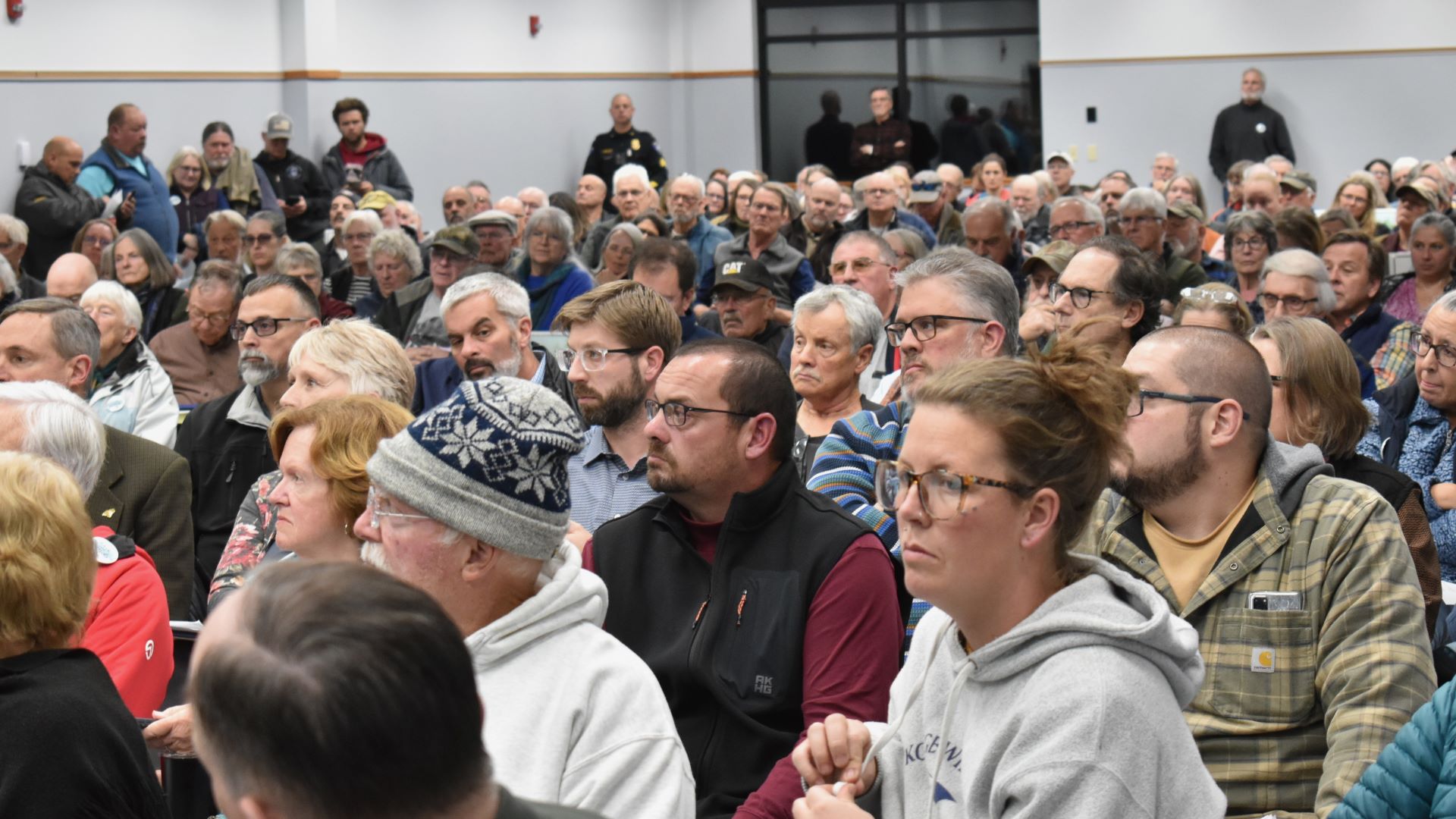
Though failures of such magnitude have been rare in Maine, the state has its fair share of hazardous dams and in 2005 saw a state-owned dam fail near Newcastle, releasing debris from a man-made lake that cost $300,000 to clean up.
Part of the concern surrounding the abandonment of the Bucksport-area dams comes from the high hazard potential and poor condition of the dam on Silver Lake. If breached, its floodwaters could reach 70 homes and endanger hundreds of lives downstream in Bucksport, according to a 2021 inspection from Fletcher, the dam safety program engineer.
Fletcher also described significant deficiencies with the dam, including a deteriorating concrete structure and leakages developing in its left and right sides. He recommended that AIM create an operation and maintenance plan to track the dam’s leakages and other issues, then report back to the dam safety program twice a year.
But the dam safety program never followed up with AIM after that, according to Mallory, the dam safety program’s director. The program struggles to inspect all the hazardous dams it is obligated to and couldn’t spare sending an engineer to follow-up on a dam that had already been inspected before its deadline, Mallory told The Monitor Friday after attending AIM’s public hearing.
“There’s a lot of steps that we could do if I had another engineer,” Mallory said. “I would have sent an engineer down there to reinspect those dams. I don’t have that. I just don’t have those assets. I have Tony, and we’re trying.”
Building resilience
After going four years without tapping into the federal grant that funds the design process for rehabilitating or removing high hazard dams, Maine secured a $2.5 million award this fall. Outside experts and the program’s assistant dam inspector have also been working to update inundation maps with GIS and digitize dam emergency action plans, according to Mallory.
And even without the digitization of the emergency plans, Mallory is confident in MEMA’s ability to adequately warn communities through alerts similar to those issued by the National Weather Service for flash floods.
Compared to what the state’s hazard mitigation plan and the ASDSO report call for, however, these modest gains are only a sliver of what Maine needs to modernize its dam safety program and foster resilience to climate change. One internal estimate from MEMA recommended a $900,000 annual budget for the dam program, enough funding for two engineers, two assistant engineers and administrative staff.
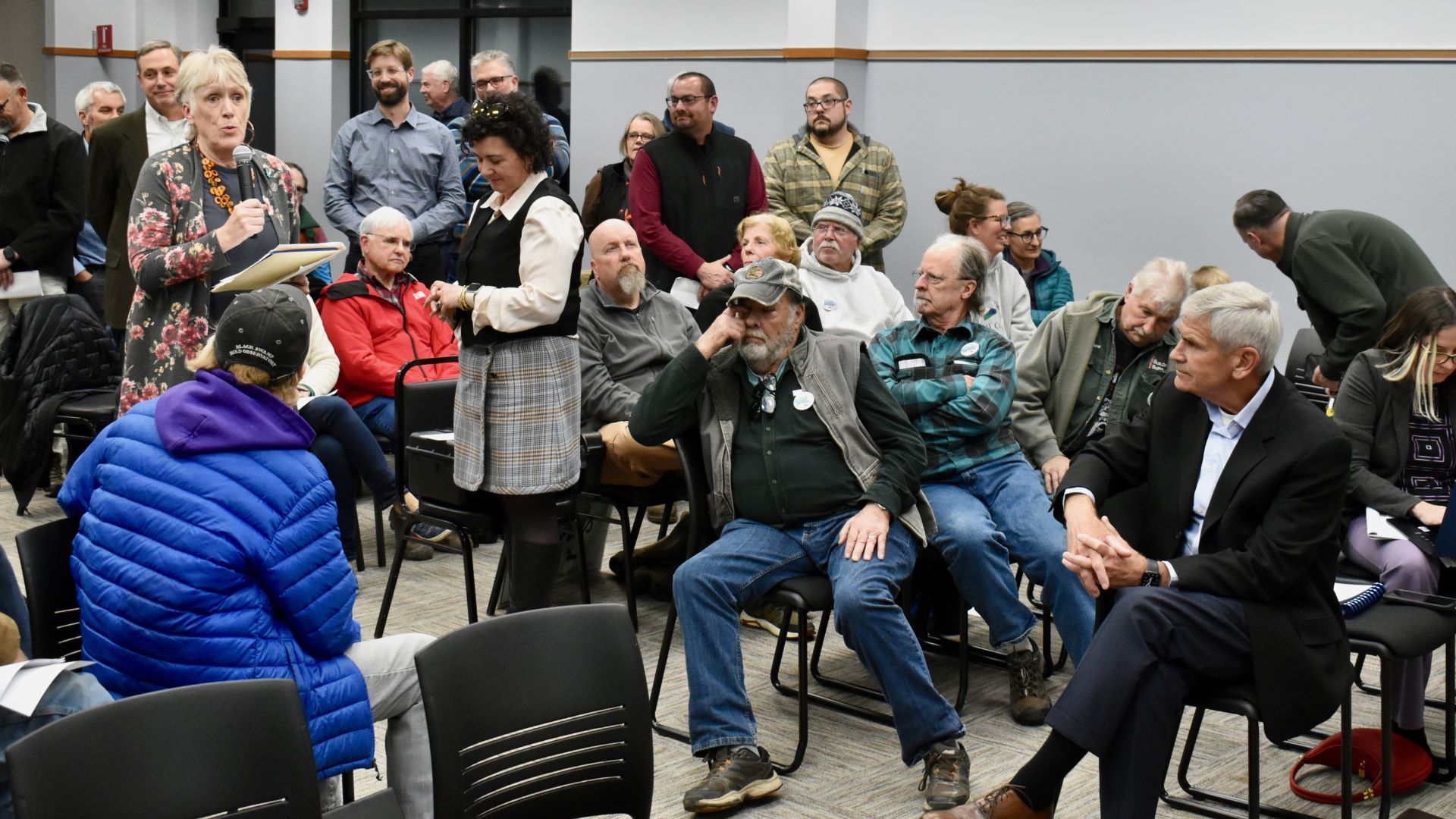
States in similar situations have managed to overcome the same obstacles, however. When Green started at Vermont’s dam safety program in 2017, he was one of two engineers responsible for inspecting hundreds of dams and operating the 13 state-owned dams.
The dam safety program’s legal authority was so weak that Green couldn’t even set foot on a private dam owner’s land without their permission, let alone inspect dams and compel owners to make necessary repairs.
Then, in 2018, the Vermont legislature granted the program rulemaking authority, allowing dam regulators to bring their program up to date with federal standards and take enforcement action when dam owners fail to maintain their dams.
Vermont’s updates were gradual and limited to policy at first, but as time went on the program added a few more staff members through grant funding, then the July 2023 floods fast-tracked the program.
“Within a few years we were able to pull together the two additional staff, which made everything seem possible,” Green said. “The flood kept us moving uphill.”
Green now has plans for the program to expand to almost a dozen staff members and is leading a massive inventory effort to record the location, condition and owners of the dams that have been able to skirt regulation, then compel the owners to make required improvements.
“Dams are forgotten infrastructure, and I think that’s obviously changing with all the highlights that dams have had in the last years,” Green said. “It’s something that we in the dam safety community can’t let people forget.”
Back in Maine, Mallory sees the abandonment of the Bucksport dams as an example of the dire straits that his dam safety program is in and a call for action to turn it around.
After the hearing, Mallory lingered behind and chatted with state legislators, explaining how part of these complications might have been avoided if Maine adopted the changes recommended in the peer review. With adequate staff, funding and policies, the program could have mandated compliance from AIM and ensured the dams’ safety before they were abandoned.
“I think this is a guinea pig,” Mallory said. “This is the first abandonment ever. I’m hoping that with the attention on this, the legislators will (consider the recommendations) that we submitted and that will help future problems.”


